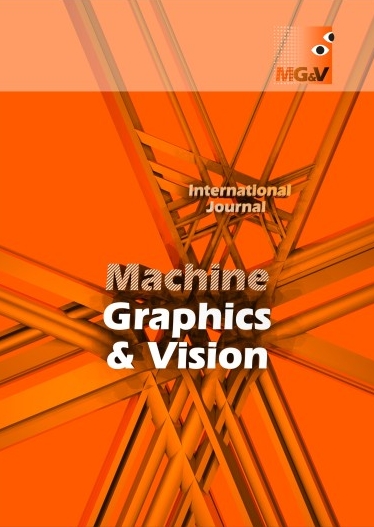Main Article Content
Computer vision has gained significant attention in the field of information technology due to its widespread application that addresses real-world challenges, surpassing human intelligence in tasks such as image recognition, classification, natural language processing, and even game playing. Sudoku, a challenging puzzle that has captivated many people, exhibits a complexity that has attracted researchers to leverage deep learning techniques for its solution. However, the reliance on black-box neural networks has raised concerns about transparency and explainability. In response to this challenge, we present the Rule-based Explaining Module (REM), which is designed to provide explanations of the decision-making processes using Recurrent Relational Networks (RRN). Our proposed methodology is to bridge the gap between complex RRN models and human understanding by unveiling the specific rules applied by the model at each stage of the Sudoku puzzle solving process. Evaluating REM on the Minimum Sudoku dataset, we achieved an accuracy of over 98.00%.
Article Details
Y. Björnsson, S. Helgason, and A. Pálsson. Searching for explainable solutions in Sudoku. In: 2021 IEEE Conference on Games (CoG), pp. 1-8. Copenhagen, Denmark, 17-20 Aug 2021. https://doi.org/10.1109/CoG52621.2021.9618900. (Crossref)
B. Bogaerts, E. Gamba, and T. Guns. A framework for step-wise explaining how to solve constraint satisfaction problems. Artificial Intelligence, 300:103550, 2020. https://doi.org/10.1016/j.artint.2021.103550. (Crossref)
K. N. Das, S. K. Bhatia, S. Puri, and K. Deep. Solving Sudoku puzzle by evolutionary algorithm. In: Proc. 21st Asian Technology Conference in Mathematics. Mathematics and Technology, LLC, Pattaya, Thailand, 14-18 Dec 2016. https://atcm.mathandtech.org/EP2016/contributed/4052016_21261.pdf.
G. D. Engin, B. Aksoyer, M. Avdagic, D. Bozanli, U. Hanay, et al. Rule-based expert systems for supporting university students. Procedia Computer Science, 31:22-31, 2014. https://doi.org/https://doi.org/10.1016/j.procs.2014.05.241. (Crossref)
J. Espasa, I. P. Gent, R. Hoffmann, C. Jefferson, and A. M. Lynch. Using small MUSes to explain how to solve pen and paper puzzles. ArXiv, 2021. ArXiv.2104.15040. https://doi.org/10.48550/arXiv.2104.15040.
D. K. R. Gaddam, M. D. Ansari, and S. Vuppala. On Sudoku problem using deep learning and image processing technique. In: Proc. 3rd Int. Conf. Communications and Cyber Physical Engineering (ICCCE) 2020, vol. 698 of Lecture Notes in Electrical Engineering, pp. 1405-1417, 2020. https://doi.org/10.1007/978-981-15-7961-5_128. (Crossref)
O. Gerasimova, N. Severin, and I. Makarov. Comparative analysis of logic reasoning and graph neural networks for ontology-mediated query answering with a covering axiom. IEEE Access, 11:88074-88086, 2023. https://doi.org/10.1109/ACCESS.2023.3305272. (Crossref)
T. Guns, E. Gamba, M. Mulamba, I. Bleukx, S. Berden, et al. Sudoku assistant - an AI-powered app to help solve pen-and-paper Sudokus. In: Proc. AAAI Conference on Artificial Intelligence, p. 16440–16442. AAAI Press, 2023. https://doi.org/10.1609/aaai.v37i13.27072. (Crossref)
B. Hobiger. Sudoku for Java - HoDoKu, 2013. https://sourceforge.net/projects/hodoku/, [Accessed: 15 Oct, 2023].
A. Hussain, S. U. Amin, H. Lee, A. Khan, N. F. Khan, et al. An automated chest X-ray image analysis for Covid-19 and pneumonia diagnosis using deep ensemble strategy. IEEE Access, 11:97207-97220, 2023. https://doi.org/10.1109/ACCESS.2023.3312533. (Crossref)
B. Indriyono, N. Pamungkas, Z. Pratama, E. Mintorini, I. Dimentieva, et al. Comparative analysis of the performance testing results of the backtracking and genetics algorithm in solving Sudoku games. International Journal of Artificial Intelligence and Robotics, 5(1):29-35, 2023. https://doi.org/10.25139/ijair.v5i1.6501. (Crossref)
P. Linardatos, V. Papastefanopoulos, and S. B. Kotsiantis. Explainable AI: A review of machine learning interpretability methods. Entropy, 23(1):18, 2021. https://doi.org/10.3390/e23010018. (Crossref)
D. Macha, M. Kozielski, Ł. Wróbel, and M. Sikora. RuleXAI - A package for rule-based explanations of machine learning model. SoftwareX, 20:101209, 2022. https://doi.org/10.1016/j.softx.2022.101209. (Crossref)
N. Musliu and F. Winter. A hybrid approach for the Sudoku problem: Using constraint programming in iterated local search. IEEE Intelligent Systems, 32(2):52-62, 2017. https://doi.org/10.1109/MIS.2017.29. (Crossref)
P. Norvig. Solving every Sudoku puzzle, 15 Jan 2012. https://norvig.com/sudoku.html, [Accessed: 15 Oct, 2023].
E. Onokpasa, D. Bisandu, and D. Bakwa. A hybrid backtracking and pencil and paper Sudoku solver. International Journal of Artificial Intelligence and Robotics, 181(47):39-43, 2019. https://dspace.unijos.edu.ng/jspui/handle/123456789/2769. (Crossref)
R. B. Palm, U. Paquet, and O. Winther. Recurrent relational networks. In: Advances in Neural Information Processing Systems 31 - Proc. 32nd Int. Conf. Neural Information Processing Systems (NeurIPS) 2018, vol. 31 of NIPS'18, p. 3372–3382, 2018. https://proceedings.neurips.cc/paper/2018/hash/b9f94c77652c9a76fc8a442748cd54bd-Abstract.html.
K. Park. 1 million Sudoku games, 2017. https://www.kaggle.com/datasets/bryanpark/sudoku, [Accessed: 15 Oct, 2023].
X. Pengcheng, H. Zhenlin, Z. Liuqi, W. Ning, Z. Hanghang, et al. A realtime image recognition method of Power AI based on quadtree algorithm. In: Proc. 2023 2nd Int. Conf. Innovation in Technology (INOCON), pp. 1-6. Bangalore, India, 3-5 Mar 2023. https://doi.org/10.1109/INOCON57975.2023.10101145. (Crossref)
M. Prabha, S. Radha, P. M. Priya, and B. S. Dhivya. Sudoku solver using minigrid based backtracking algorithm. International Journal of Research in Engineering, Science and Management, 5(6):138–140, 2022. https://journal.ijresm.com/index.php/ijresm/article/view/2180.
G. P. Reddy and Y. V. P. Kumar. Explainable AI (XAI): Explained. In: Proc. 2023 IEEE Open Conference of Electrical, Electronic and Information Sciences (eStream), pp. 1-6. Vilnius, Lithuania, 27-27 Apr 2023. https://doi.org/10.1109/eStream59056.2023.10134984. (Crossref)
G. Riley. CLIPS rule based programming language code, jan 2016. https://sourceforge.net/p/clipsrules/code/HEAD/tree/branches/63x/examples/sudoku/, [Accessed: 15 Oct, 2023].
G. Royle. Good at Sudoku? Here’s some you’ll never complete. The Conversation, 12 Feb 2012. [Accessed: 15 Oct, 2023]. https://theconversation.com/good-at-sudoku-heres-some-youll-never-complete-5234.
S. Shi, H. Chen, W. Ma, J. Mao, M. Zhang, et al. Neural logic reasoning. In: Proc. 29th ACM Int. Conf. Information & Knowledge Management (CIKM '20), p. 1365–1374. Boise, ID, USA, 21-25 Oct 2020. https://doi.org/10.1145/3340531.3411949. (Crossref)
Y. Singh, P. Kumar, S. Goel, P. Garg, T. Srivastava, et al. Anuvadak: Language system using machine learning techniques. In: Proc. 2023 Int. Conf. Artificial Intelligence and Smart Communication (AISC), pp. 742-745. Greater Noida, India, 27-29 Jan 2023. https://doi.org/10.1109/AISC56616.2023.10085373. (Crossref)
A. A. Suha Binta Wadud and M. Abdullah-Al-Wadud. An improved hybrid method combining backtracking with pencil and paper for solving sudoku puzzles. In: Proc. Int. Symp. Electrical, Electronics and Information Engineering (ISEEIE) 2021, p. 438–441. Association for Computing Machinery, Seoul, Republic of Korea, 19-21 Feb 2021. https://doi.org/10.1145/3459104.3459176. (Crossref)
Y. Tian. Artificial intelligence image recognition method based on convolutional neural network algorithm. IEEE Access, 8:125731-125744, 2020. https://doi.org/10.1109/ACCESS.2020.3006097. (Crossref)
P.-S. T. P.-S. Tsai, T.-F. W. P.-S. Tsai, J.-Y. C. T.-F. Wu, and J.-F. H. J.-Y. Chen. Integrating of image processing and number recognition in Sudoku puzzle cards digitation. Journal of Internet Technology, 23(7):1573–1584, 2022. https://doi.org/10.53106/160792642022122307012. (Crossref)





